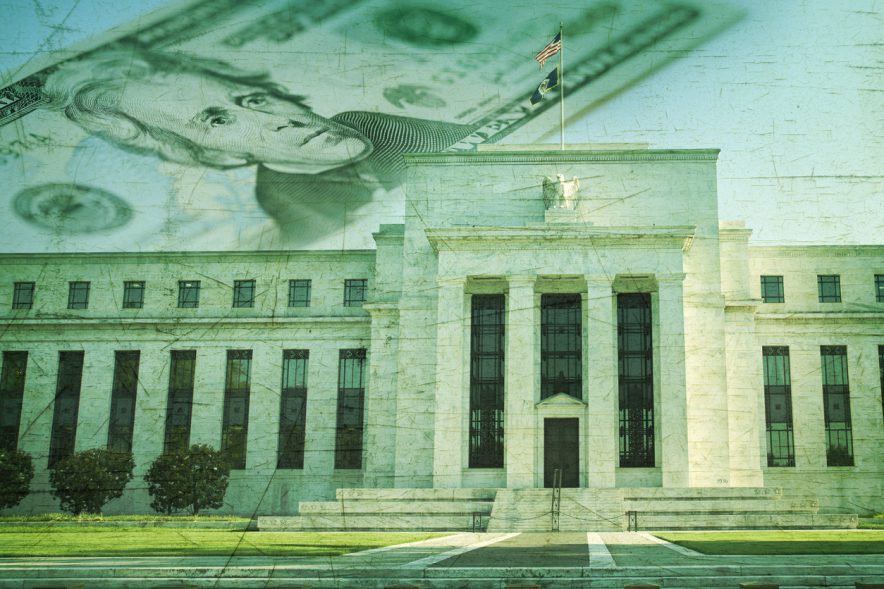
Fed Task Forces Analyze Faster Payments
[fusion_text]Two Fed task forces are currently reviewing proposals to make payments faster and more secure. The faster payments task force, which was established by the Federal Reserve in 2015, will look at two separate areas: making payment capabilities faster and improving payment security.
The task force will be undertaking reviews of 19 proposals which were submitted by a wide range of representatives from the payment’s sector, including service providers and businesses. Following the review, a two-part report will be published. The first half of the report is due to be released in January 2017, and as well as examining the history, it will also detail gaps in the current payment system and the opportunities to make improvements to it. In addition, the review will outline the benefits to the public at a faster payments system.
The next phase of the report is due to be published in mid-2017. It will feature a detailed discussion/assessment of the 19 separate proposals and paint a clearer picture of what a faster payment system in U.S. might look like.
Gordon Werkema, Payments Strategy Director for the Federal Reserve System, said:
“The review that began yesterday is the next step in the ongoing process to improve the speed and safety of payments in the United States.”
While Sam Rodriguez, Faster Payments Strategy Leader for the Federal Reserve, added:
“The task force review process is designed to facilitate diverse stakeholder input for the benefit of potential operators of faster payments capabilities, end users of these systems, and the public at large.”
Planning for an Improved U.S. Banking System
The plans for a real-time payments system were first set out in the ‘Strategies for improving the U.S. payments system’. Aside from detailing the importance of faster options, the document detailed three main aims that a new payment infrastructure must achieve: ubiquity, safety and efficiency.
Moreover, 2014 study, which was conducted by McKinsey on behalf of the Federal Reserve Banks and the Federal Reserve Board, concluded that a new payment infrastructure was necessary for the U.S.
In spring 2016, it was announced the consultancy firm McKinsey had been hired to assess the faster payment proposals submitted by the financial industry and business professionals. The proposals had to comply with 36 effectiveness criteria, and these proposals have since been narrowed down to the final nineteen.
The Need for a Faster Payments System
Several other countries have already made great strides towards developing a real-time payment system. As an example, Australia has announced the New Payments Platform which should be operational by 2017 , and numerous financial companies are also experimenting with blockchain technology to hasten the speed, transparency and security of transactions, although it will be some time before such technology becomes commonplace in the banking world.
The United Kingdom launched the faster payments initiative back in 2008 which is open to business customers and allows payments to be made almost immediately, and real-time payments have been adopted by financial institutes around the world.
As noted in a Forbes article, there has been an industry shift towards the need for these faster payments, but some of the top financial institutions had been against the idea due to the considerable costs involved and whether the expense could be justified.
However, we now live in a 24/7 society where a faster payments system is imperative to both businesses and consumers in U.S., and the U.S. is already falling behind other countries in this area.
In addition, changing technology such as mobile payments means consumers have come to expect far greater efficiency when it comes to managing financial transactions, and they don’t want to be inconvenienced by delays – which is why the banking industry must introduce measures to adapt with the evolving needs of consumers.
However, compared with these efforts, the U.S. banking services have been described as ‘some of the most backward’, and there is a need for it to keep up with the new world of modern E-commerce.
Josh Reich, CEO of the banking start up Simple has long been warning that transforming the banking system in the U.S. is a necessity, and in 2013 Reich highlighted how slow the banking industry had been to adopt new technologies.
Currently, the U.S. is using two main ways of transferring money or paying a bill: wire transfers and ACH payments. While efforts are being undertaken to speed up ACH payments, there can still be delays in waiting for payments to go through. These delays pose challenges for customers, businesses and the banks themselves, which is why the Fed has been forced into action.
As things stand, there are banks in the U.S. moving ahead with faster payment options, but as many commentators highlight, this is leading to a disjointed banking system. Once complete, the Fed task force should be able deliver a uniform solution that should advance the U.S. payments system, however, speed shouldn’t be the only issue that the task force examines.
In its Flavors of Fast report, FIS Global argues that it is not just speed that is the essence: the banking and financial world needs to offer innovation if it is going to get a good return on investment.
Warren Gardiner of FIS Global states:
“Convenience, security, universal access, financial inclusion of previously unbanked populations, adoption of international standards, enhanced remittance capacity for B2B transactions and low cost are other important characteristics of emerging interbank payment systems but speed seems to be the one that gets all of the attention.”
Industry Efforts to Speed Up Payment Times
The payments industry has realized the need to improve the efficiency of payment times and it is actively taking steps towards this. The Clearing House announced plans for a real-time payment system which is being made possible through its partnership with FIS Global. This system is described as the first of its kind and a pilot will be launched in 2017.
For its part, NACHA as introduced new rules will allow same day processing for ACH payments. Previously, payments were settled on the next business day although its same-day processing service excludes international and high value transactions.
NACHA plans to gradually phase in, the faster ACH payments, and work began on this new system in September 2016. The first phase will concentrate on credits, which will include B2B payments, P2P payments and payroll direct payments, among others, will qualify for one day settlements.
The next stage will come into force in September 2017 and will cover debits. In 2018, there are plans to speed up settlements further still and payments will be made available by 5:00pm on the same day.
Moreover, in 2015, MasterCard announced its MasterCard Sent service, which was aimed at B2B customers and governments, as well as regular consumers and delivers real time payments.
However, it is not clear just how much of an appetite there is for an industry wide change to the payments system and how financial institutions are to broadly adopt a whole new infrastructure, not to mention the complexities that will be involved in establishing an industry wide real-time payments system.
Complexities of a Faster Payment System
Elizabeth McQuerry, a payments consultant, told American Banker, one of the major obstacles to a faster payment system is the sheer amount of banks that the U.S. has compared with other countries – BankingTech.com puts the figure at more than 11,000. Businesses, payment services and service providers all need coordinate if a new, faster payments infrastructure is going to be a success, and there’s the thousands of credit unions to consider too.
McQuerry also stressed the need for a solution that would be suitable for banks of various sizes and it would also need to consider the individual technical capabilities of each organization.
However, as detailed below, this is far from the only challenge, and the added convenience of faster payments means there are many more issues that need to be addressed, including.
- The potential security issues of upgrading to a real-time banking system. This has been recognized by the Secure Payments Task Force, and it has recently extended the deadline for the industry to have its say on how the task force is responding to these concerns.
- When real-time payments come into force, there is a concern they will be more vulnerable to fraud due the limited time to check them. Banks will need to implement a wider range of fraud prevention measures to counter this. These measures will need to be put in place across all areas including online, branch and mobile transactions.
- Banks and other financial institutes will also need to upgrade their anti-fraud systems to monitor transactions in real time, and data protection will need to be addressed too.
- There will also need to be significant investment into ongoing maintenance and customer service for a new payment infrastructure to be a success.
- Whichever system is eventually adopted, and whether it is run by the Fed, or by privately owned companies, such an undertaking is unlikely to go smoothly. When payment systems have been introduced around the world, there has often been teething problems. For instance, Faster Payments, which is now considered a model for real-time transactions, got off to a slow start when it was first launched.
- Another area for concern will be payments made in error. Payments sent to a wrong account are a common occurrence, and Faster Payments have had to introduce new rules to make it easier to return the money to the sender, provided it can be shown the payment was sent as a genuine mistake. However, at this stage it is unclear who would regulate a faster payment service in the U.S. and whether it would be publicly or privately owned, so it remains uncertain what regulations would in place to return payments made in error under a faster payments system in the U.S.
Attitudes Towards Faster Payments
An up to date, more efficient payment system offers benefits to consumers, businesses and banks, including:
- Financial institutions will have more opportunity to reach out to and engage new customers and faster payments have the potential to open new revenue streams.
- Merchants will be able to offer greater efficiency due to the quicker payments, which means they can dispatch goods sooner; this will improve customer satisfaction.
- Consumers will have more certainty over when payments are going out, helping them to avoid going overdrawn, and reducing the charges caused by fees, which stand at $32.5 billion.
- Customer retention or attracting customers is another reason why banks should be keen to adopt a faster payment system. Research has shown that 50 percent of consumers say they would switch banks if they were to offer real-time payments. Although the survey was conducted in the UK, it shows a demand for a faster way of accepting and receiving payments, and further research shows most businesses are in favor of same-day ACH for urgent bill payments.
Moreover, one area that will benefit the most from a faster, payment system is B2B businesses. Efforts towards speeding up transactions have tended to concentrate on the consumer side, however, transforming payments for the B2B sector is a complex process due its size, which may be one reason why innovations in this area are falling behind.
Conclusion:
The payments system in the U.S. is long overdue an overhaul and changing technologies and lifestyles means it needs updating to suit the way we live and work now. However, uncertainty surrounds exactly what form this new system will take and who will be responsible for its regulation.
U.S. financial institutions in the are making efforts to provide faster payment solutions, but the U.S. is still behind in its efforts to offer a unified and faster system that is available to everyone, while also ensuring security and efficiency.
Once the task force review is complete and the reports issued in 2017, both consumers and businesses will be closer to knowing what shape this new infrastructure might take. However, the process of implementing it will prove to be a challenging one, and there may be some resistance ahead from organizations who don’t wish to change over to a faster payment system.[/fusion_text]
Ready to get started?
Get in touch or create an account





